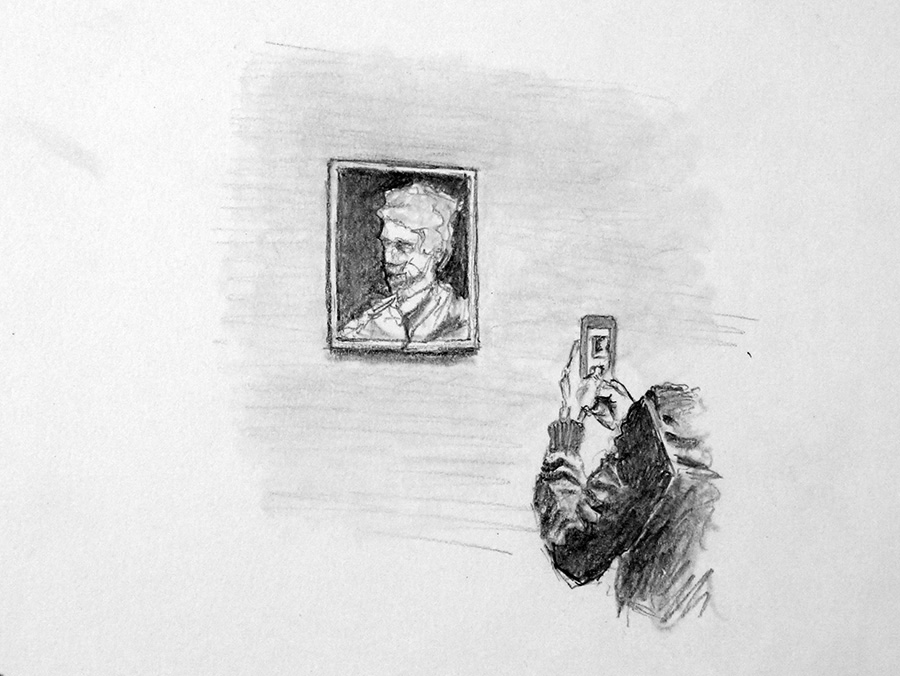
At the Met: the cellphone brandished as a weapon, a screen, an interpreter-par-excellence, of all art. I observe the same ritual time and time again: a museum-goer approaches a work of art – usually a famous one – stops several feet away, holds up her phone at arm’s length, takes a picture, turns and marches off to the next piece. Another spectator fills her place, similarly armed. Here the camera has become more than an extension of the eye or a handy mnemonic device; it has literally become a replacement for the eye and the mind. The phone’s camera does what the spectator’s eye would normally do, registering the image, a ‘representation’ of the work; then the phone’s memory does what the mind would normally do in storing this image away for future reflection. Only, one has to ask: does this future reflection ever take place? And if so, when? Hours later? At home? At work? In moments of down time or boredom? Doubtful. Why then bother going to a museum at all? The act of looking at a work of art has been reduced to an act of mechanical registration, and in the process, turned the museum into a shooting gallery. Is this simply one more example of the quintessential tourist snapshot? An indexical ‘proof’ that someone has been there, done that? But proof for whom?
Leave a comment